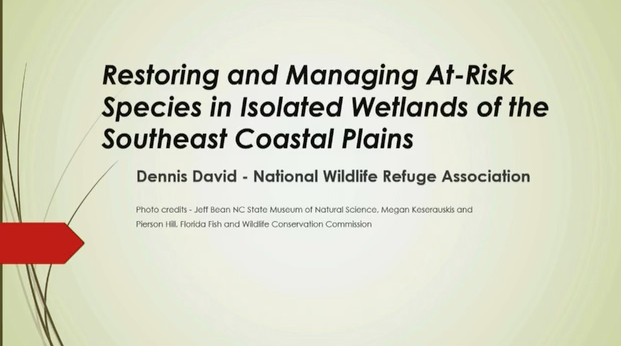
Dennis David, National Wildlife Refuge Association; Chuck Hunter, US Fish & Wildlife Service; Duke Rankin, US Southeastern Partners in Plant Conservation 2020 Conference Abstracts – 38 – Forest Service; Joanne Baggs, US FS; Carrie Sekerak, US FS; Jeff Hall, NC Wildlife Resources Div.; Pierson Hill, Florida Fish & Wildlife Conservation Com.; Greg Titus, FWS; Amy […]
Read More…
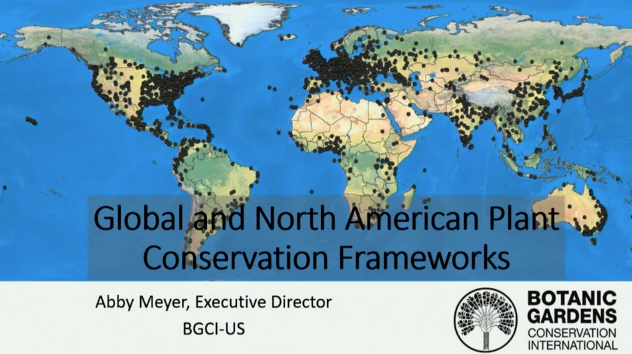
Abby Meyer, Botanic Gardens Conservation International, U.S. Botanic Gardens Conservation International (BGCI) mobilizes the global botanic garden community to conserve plant species. BGCI reports to the United Nations on progress made toward the Global Strategy for Plant Conservation (GSPC). The GSPC, as well as the North American Botanic Garden Strategy for Plant Conservation, serve as […]
Read More…
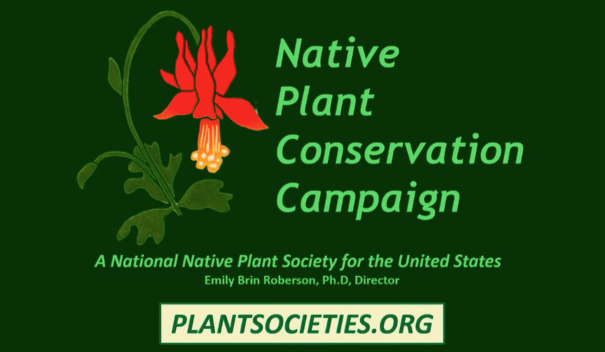
Dr. Emily B. Roberson, National Plant Conservation Campaign Plants are second-class conservation citizens. People often overlook or ignore plants in their environment, even in natural areas where animals tend to receive the “lion’s share” of attention. Sadly this problem is widespread among policymakers. Even many environmental groups often overlook native plants in their work. As […]
Read More…
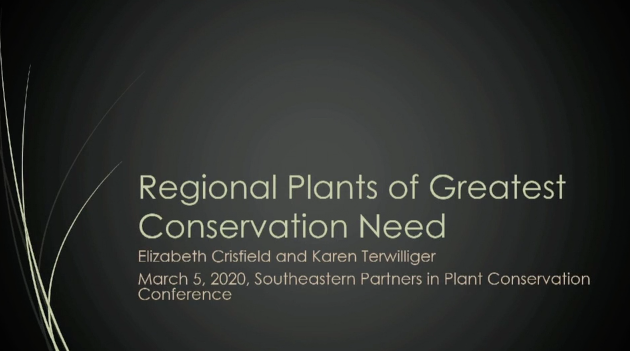
Dr. Elizabeth Crisfield and Karen Terwilliger, Strategic Stewardship Initiative State boundaries have always been invisible to biota. But now, as climate change shifts climatic regimes over the landscape, as more invasive species become established, as people move native and exotic species from place to place – regional collaborative conservation across state lines is needed more […]
Read More…
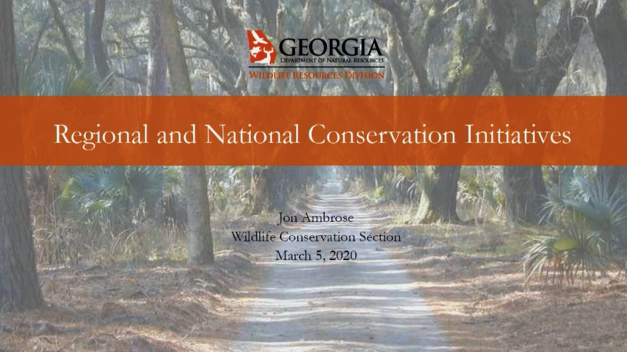
Dr. Jon Ambrose, Georgia DNR, Chief of Wildlife Conservation All state wildlife agencies in the Southeast have developed State Wildlife Action Plans, strategic plans for conservation of rare or declining species and their habitats. Some states have included plants as species of greatest conservation need, and others are considering doing so in the next revision […]
Read More…
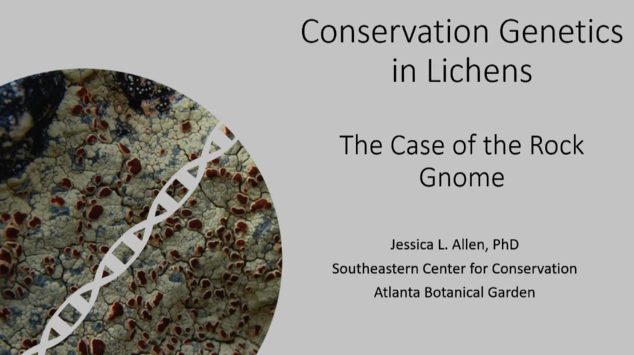
Jessica L. Allen, PhD, Southeastern Center for Conservation, Atlanta Botanical Garden Dr. Allen outlines a conservation genomics approach to assessing genetic diversity between geographically separated populations of the Rock Gnome lichen, a Southern Appalachian endemic. Her results show that each locale sampled has a genetically distinct population. This suggests that the management plan for this lichen should include protecting […]
Read More…
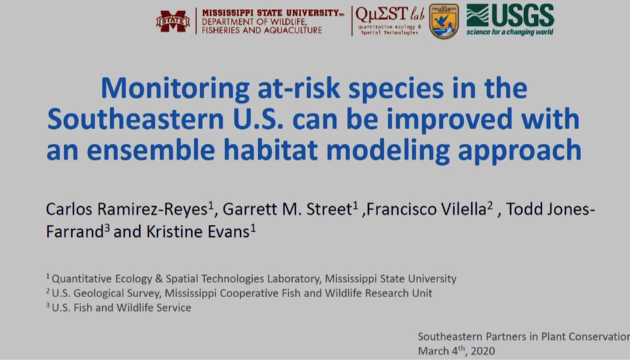
Dr. Carlos Ramirez-Reyes1, D. Todd Jones-Farrand3, Garret Street1,2, Francisco Vilella4, Kristine O. Evans 1,2 1. Department of Wildlife, Fisheries and Aquaculture, Mississippi State University 2. Quantitative Ecology & Spatial Technologies Laboratory, Mississippi State University 3. U.S. Fish and Wildlife Service 302 Natural Resources, University of Missouri 4. U.S. Geological Survey, Mississippi Cooperative Fish and Wildlife […]
Read More…
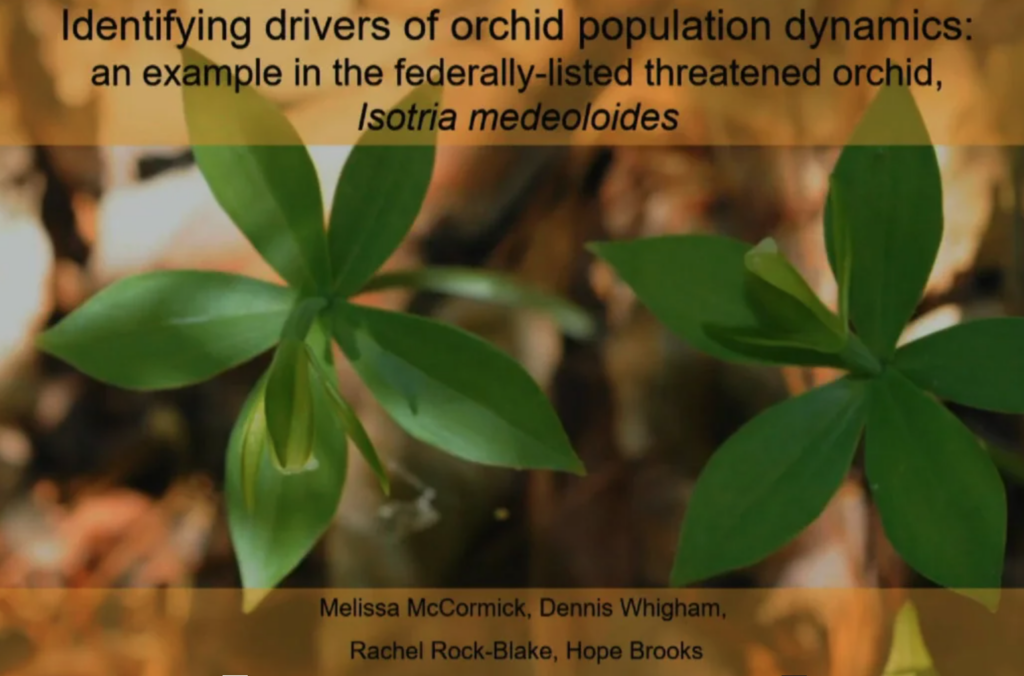
Melissa K. McCormick, Dennis F. Whigham, Rachel Rock-Blake, Hope E.A. Brooks North American Orchid Conservation Center (NAOCC) and Smithsonian Environmental Research Center (SERC) Orchids are widely threatened and endangered worldwide, but efforts to conserve and restore them has been limited by not knowing about the pollinators and fungi they need to grow and reproduce. The […]
Read More…
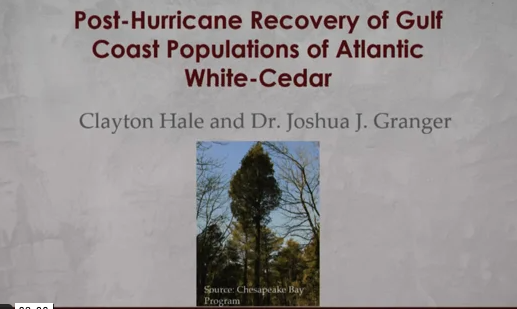
Clayton W. Hale, Mississippi State University Joshua J. Granger, Mississippi State University The number and severity of Gulf Coast hurricanes is increasing, resulting in intensified disturbance on coastal forest communities. Atlantic white-cedar (Chamaecyparis thyoides L.) grows no further than one hundred miles from the coast, making the species particularly vulnerable when hurricanes collide with the coast. […]
Read More…
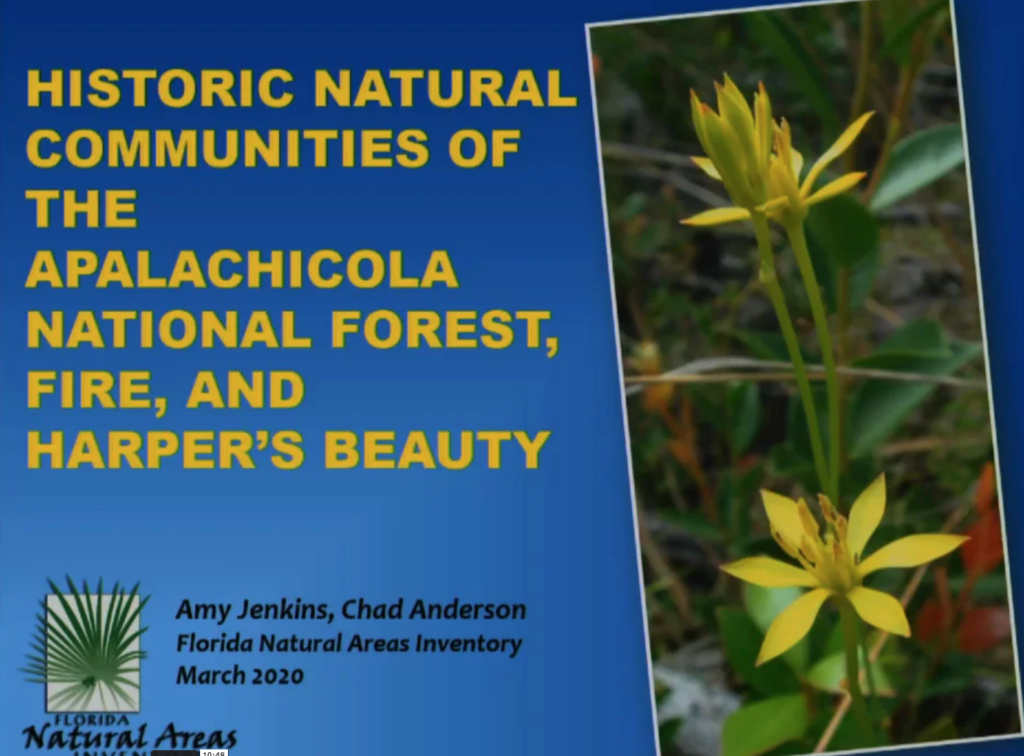
Amy Jenkins, Florida Natural Areas Inventory Chad Anderson, Florida Natural Areas Inventory Jason Drake, United States Forest Service Understanding the historic conditions and habitats in a region is a vital first step to planning restoration and management activities. With our partners, US Forest Service, Florida Forest Service, and the Florida Fish and Wildlife Conservation Commission, […]
Read More…
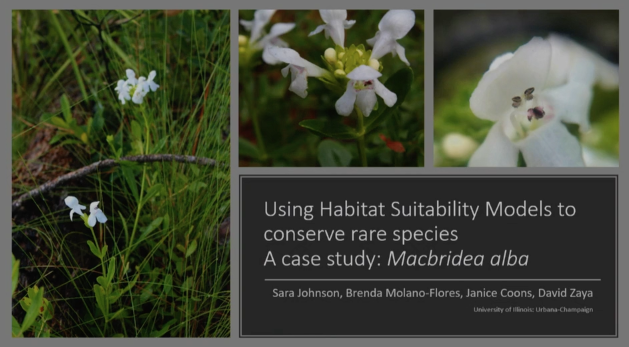
Sara Johnson, Department of Natural Resources and Environmental Science at University of Illinois: UrbanaChampaign Brenda Molano-Flores, Illinois Natural History Survey, University of Illinois: Urbana-Champaign Janice Coons, Eastern Illinois University Many rare and at-risk species exhibit a paucity of research, leaving gaps in the knowledge required to conserve them. Macbridea alba Chapman (White birds-in-a-nest, Lamiaceae) is […]
Read More…
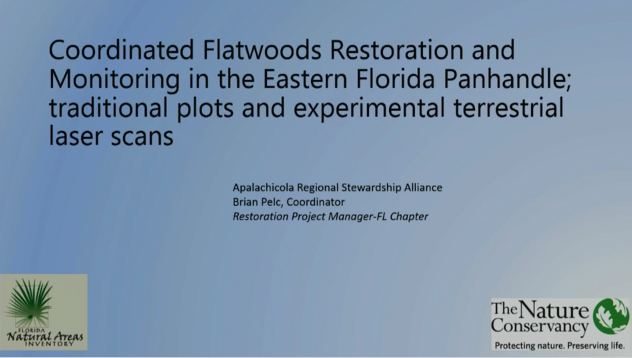
Brian Pelc, Restoration Project Manager, The Nature Conservancy-Florida. Coordinator of the Apalachicola Regional Stewardship Alliance. Chad Anderson, Ecologist, Florida Natural Areas Inventory Wet and Mesic Longleaf Pine Flatwoods (and structurally comparable longleaf ecosystems) play a critical role in maintaining the high biodiversity of southeastern forests. Previous flatwoods work has identified as many as 191 vascular […]
Read More…
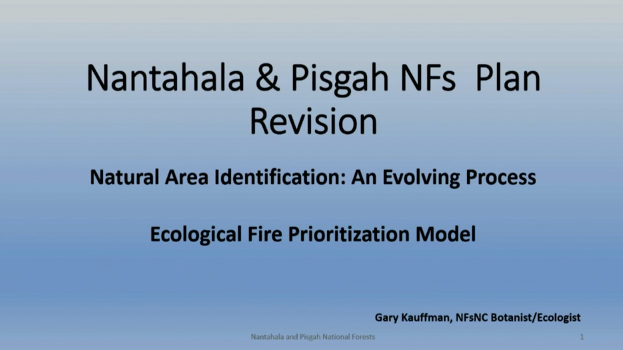
Gary Kauffman, National Forests of North Carolina US National Forests (NF) revise their forest plans every 15-20 years. Currently the Nantahala and Pisgah NFs (NPNF), 1 million plus acres, are in plan revision. As part of the process, management areas are reassessed including designated sites. Special Interest Areas (SIAs) are designated to denote special features […]
Read More…
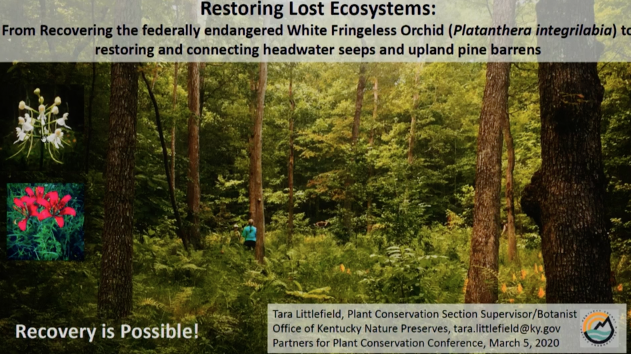
Tara Littlefield, Senior Botanist/Plant Conservation Section Manager, Office of Kentucky Nature Preserves It all started with a monitoring study of a declining White fringeless orchid (Platanthera integrilabia) population in 2007 at a State Nature Preserve in the Cumberland Plateau of Kentucky. This talk will outline this long term monitoring study of the white fringeless orchids […]
Read More…
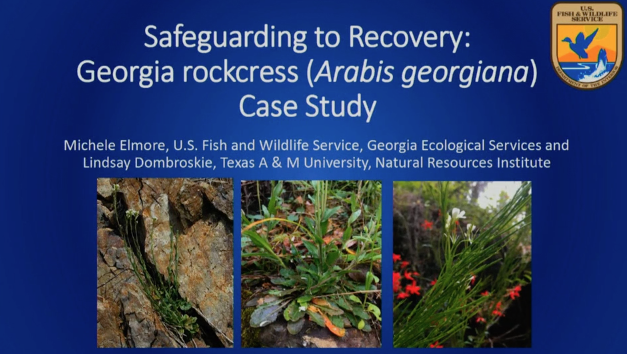
Dr. Michele Elmore, US Fish & Wildlife Service Lindsay Dombroskie, Texas A & M University, Natural Resources Institute Georgia rockcress (Arabis georgiana Harper) is a short-lived perennial plant of the mustard family (Brassicaceae) endemic to Alabama and Georgia. In 2014, this species was listed by the U.S. Fish and Wildlife Service (Service) as “Threatened” under […]
Read More…
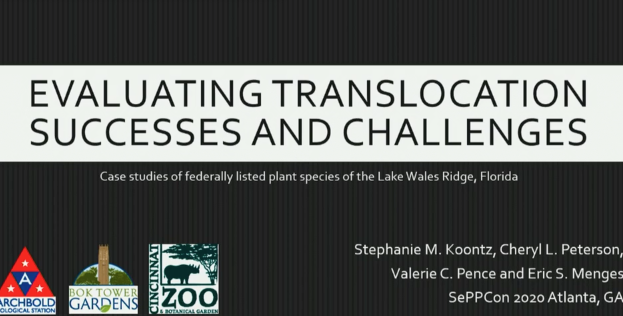
Stephanie Koontz, Archibold Biological Station, Cheryl L. Peterson, Bok Tower Gardens, Valerie C. Pence, Cincinnati Zoo and Botanical Garden, Eric S. Menges, Archbold Biological Station Translocations are an increasingly utilized tool for rare plant conservation. Urbanization along the Lake Wales Ridge, in southcentral Florida, has led to 85% loss of native Florida scrub and sandhill. […]
Read More…
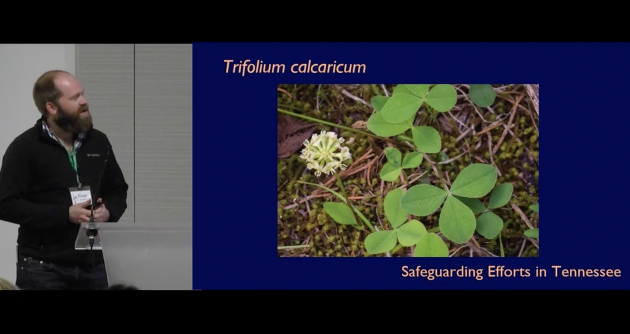
Margi Hunter, Tennessee Naturalist Program, Cooper Breeden, Southeastern Grasslands Initiative, Austin Peay State University, Tennessee Plant Conservation Alliance The lack of funding and resources necessary to conserve many of our most imperiled species and communities is a ubiquitous problem. In the absence of traditional support, more grassroots and citizen-led efforts are essential to ensure the survival […]
Read More…
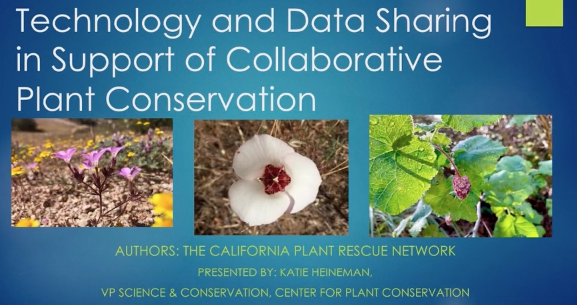
Katherine D. Heineman, Christa Horn, Naomi Fraga, Cheryl Sevilla, Heather Schneider, Vanessa Handley, Holly Forbes, Brett Hall, Evan Meyer, Tony Gunroe, Shannon Still, David Magney, Stacy Anderson, Bart O’Brien, Joyce Maschinski Center for Plant Conservation, San Diego Zoo Institute for Conservation Research, Rancho Santa Ana Botanic Garden, Santa Barbara Botanic Garden, University of California Botanic […]
Read More…

















